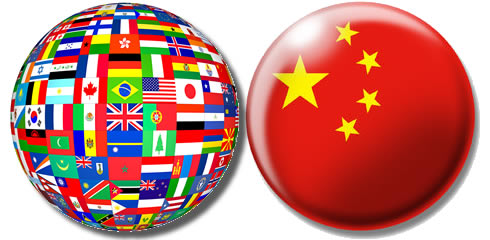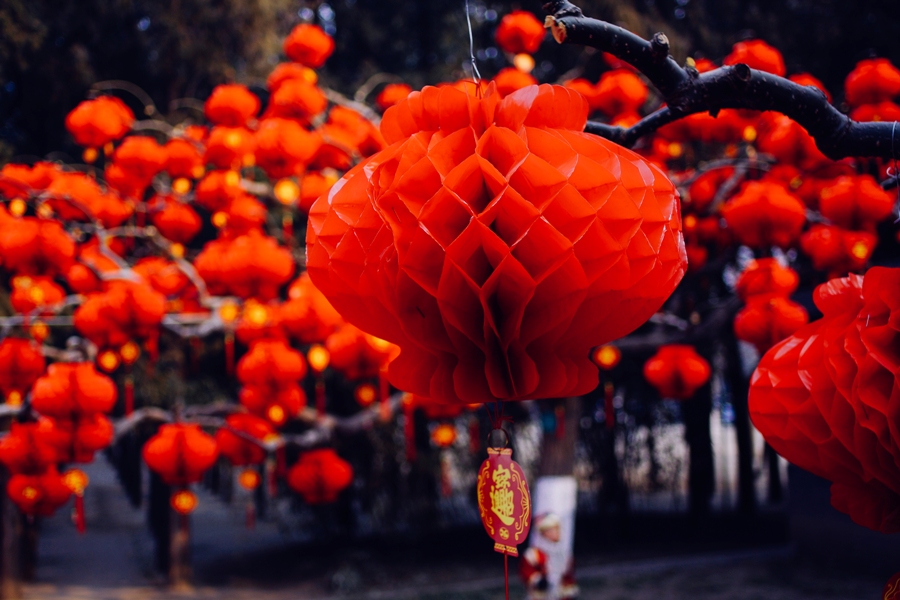For Beijingers, attending a miaohui (temple fair) comes second only to the family reunion dinner when it comes to Chinese New Year observances. Though miaohui started taking shape as early as the Wei dynasty (220-264 AD), the temple fair as we know it dates in earnest from the Tang era (618-907 AD).
RELATED: Chinese New Year Hongbao and Gift-Giving Etiquette
As Buddhism and Taoism gained influence in China, temples started hosting festivals and celebrations tied to local deities and figures. Over time, these events started taking on cultural and commercial dimensions, with the development of temple markets (miaoshi) and folk performances.

During the Yuan dynasty (1271-1368), the Quanzhen sect of Taoism spread throughout northern China and it was common for temple fairs to celebrate the achievements of Taoist figures. To this day, Taoist sites such as Beijing’s White Cloud Temple continue to hold temple fairs during Spring Festival.
Though miaohui have thrived into the present, the modern-day phenomenon is largely secular in character and rarely takes place at a temple. The commercial aspect is front and center, with a variety of vendors typically hawking snacks, toys, souvenirs, and traditional handicrafts like papercuts and clay figurines. Folk performances include lion dances, xiangshen (a Chinese comedy form), kung fu demonstrations, shadow puppet shows, and yangge, a type of harvest dance with roots in the Song dynasty.

This year, the official dates for Spring Festival are February 7-13 and mark the beginning of the Year of the Monkey. February 7 is the eve of Spring Festival, when Chinese families traditionally gather for a lavish reunion dinner. Most temple fairs run from the first to the seventh day of Spring Festival (Feb 8-14). Some of the dates and times for the following temple fairs were not confirmed as of print time, so call ahead for the most up-to-date information.

Ditan Park Temple Fair
地坛公园庙会
As one of the oldest temple fairs in Beijing, Ditan Park is a safe bet for first timers. The park contains the Temple of the Earth, where Ming and Qing dynasty emperors went to offer ritual sacrifices to the God of the Earth during the summer solstice. Reenactments of this ceremony are considered to be the highlight of the fair. A sea of red lanterns are hung all over the park for the occasion, with folk performances, historical costume displays, art exhibitions, vendors selling handicrafts, and food stalls with xiaochi (snacks) from Beijing, Sichuan, Tianjin, and Xinjiang.
RMB 10. Feb 8-14. Ditan Park, A2, Andingmenwai Dajie, Dongcheng District (6421 4657)
东城区安定门外大街2号地坛公园

The Changdian temple fair has been around since the reign of the Jiajing Emperor (1521-1567) in the Ming dynasty. Historically, the fair took place in an area that contained three temples near Liulichang in Beijing’s former Xuanwu District. In 2011, the temple fair was moved to Taoranting Park, where it now hosts xiangsheng performances, Beijing opera, dragon dances, acrobatic shows, food vendors, and traditional handicraft stalls.
RMB 10. Feb 8-14, 8.30am-4.30pm. Taoranting Park, 19 Taiping Jie, Xicheng District (6315 9837)
西城区太平街19号陶然亭公园

Yuanmingyuan Royal Temple Fair
圆明园皇家庙会
Once known as “the Versailles of the East,” Yuanmingyuan (the Old Summer Palace) hosted Spring Festival celebrations for the imperial family during the Qing dynasty. Despite the site’s checkered history (it was pillaged and burned down by French and British forces during the Second Opium War), an annual temple fair was established there in 2010. Expect ice skating performances, cultural exhibitions, historical costume displays, and a “royal market” with imperial-style snacks, calligraphy, paintings, crafts, and lantern riddles.
RMB 10. Feb 8-14. Yuanmingyuan, 28 Qinghua Xilu, Haidian District (6261 7801)
海淀区清华西路28号圆明园

Daguanyuan is based on an aristocratic garden described in the masterpiece A Dream of Red Mansions by Qing Dynasty author Cao Xueqin (1715-1763). The garden was built in 1983 to serve as a backdrop for the CCTV television series of the same name; it was opened to the public in 1989.
At Daguanyuan’s temple fair, visitors can get a sense of the grandness of the Red Mansions and the luxurious lifestyle of an upper-class Chinese family. Refined dishes from the novel will be available to try and actors will re-enact some of the novel’s classic passages. However, you do not have to be a Chinese literature buff to enjoy the event. Kids will find yummy snacks, jigsaw puzzles, magician sets, and toys for sale.
RMB 40. Jan 31-Feb 4, 9am-5pm. Daguanyuan Temple, 12 Nancaiyuan Xijie, Xicheng District (6354 4993)
西城区南菜园西街12号大观园

Dongyue Temple Fair
东岳庙庙会
Founded during the Yuan dynasty, Dongyue is a small Taoist temple dedicated to the god of Mount Tai, one of China’s five sacred Taoist mountains. Despite its modest size, the Dongyue temple fair is popular with locals. Entertainment includes kung fu displays, shadow puppet shows, Taoist music performances, and art exhibitions. Local calligraphers demonstrate their skills in chunlian, a type of Chinese New Year decoration featuring a pair of couplets written on vertical strips of paper. Chunlian are usually given away for free and designed to be hung around the front door.
RMB 10. Feb 8-14. 141 Chaoyangmen Waidajie, Chaoyang District (6551 0151)
朝阳区朝阳门外大街141号

White Cloud Temple Temple Fair
白云观庙会
The seat of the Taoist Association of China, White Cloud Temple hosts one of the few Spring Festival fairs that still retain a religious character. Every year, the devout visit the temple to burn incense sticks. In addition, there is a curious tradition associated with the large coin that hangs from White Cloud’s Wofeng Bridge; it is said that fortune will come to those who manage to hit the small brass bell hanging from the hole in the coin with a regular coin.
RMB 10. Feb 8-26. 6 Baiyunguan Jie, Xicheng District (6344 3666)
西城区白云观街6号
Useful Vocabulary
Spring Festival – 春节 chunjie
Year of the Monkey – 猴年 hou nian
Temple fair – 庙会 miaohui
Lion dance – 舞狮 wushi
Dragon dance – 舞龙 wulong
Calligraphy – 书法 shufa
Chinese New Year paintings – 年画 nianhua
Chinese New Year couplets – 春联 chunlian
Snacks – 小吃 xiaochi
Worship the gods – 拜神 baishen
Buddhism – 佛教 fojiao
Buddhist – 佛教徒 fojiao tu or 佛教的 fojiao de
Taoism – 道教 daojiao
Taoist – 道教徒 daojiao tu or 道教的 daojiao de
Two hundred thousand temple fair tickets become available this evening (Feb 2) for next week’s events, which take place at six Beijing temple complexes from February 8-12.
Advance ticket availability is in part designed to alleviate waiting times upon arrival, but also to limit crowds at the events overall. Many of the tickets are available for free, but must be pre-booked online. Scan the QR Code shown at this link to access the Cultural Beijing official WeChat account, then choose the middle tab (欢迎抢票), then choose the temple. The interface is entirely in Chinese.
This article originally appeared in the February issue of our sister magazine beijingkids.
Photos: Bridget Coila, Jean Wang, Song Zhen


